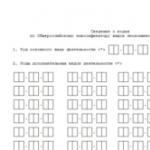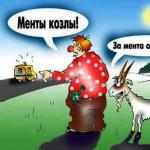Etc plasma cutting. Course of training, retraining, advanced training of a gas cutter. Topics of the professional part of the gas cutter training course
§ 1. Gas cutter of the 1st category
Characteristics of work. Manual oxygen cutting and cutting of lightweight steel scrap with petrol and kerosene cutting devices. Preparing castings for cutting, removing burnt marks, profits and sprues and placing them for cutting. Charging and discharging a gas generator installation.
Must know: basic cutting techniques, design of used burners, cutters, reducers, cylinders; paint colors gas cylinders and rules for handling them; basic properties of gases and liquids used in metal cutting, and rules for handling them.
Work examples
1. Ingots - a piece of the bottom part.
2. Angles, pipes - cutting.
§ 2. Gas cutter of the 2nd category
Characteristics of work. Oxygen and air-plasma straight and shaped cutting in a vertical and lower position of metal, simple parts made of carbon steel by manual marking on portable and stationary gas-cutting and plasma-arc machines. Manual oxygen cutting and cutting of heavy steel scrap with petrol and kerosene cutting devices. Cutting of profits and sprues for castings up to 300 mm thick with one connector and open core marks. Marking, selection by weight and profiles of simple oversized scrap, cutting to specified sizes and stacking.
Must know: arrangement of serviced equipment and cutting tools; permissible residual gas pressure in cylinders; structure and properties of gas flame and plasma arc; cutting techniques; requirements for gas cutting; purpose and conditions of use of special devices; scrap dimensions according to state standards; gas consumption standards; measures to prevent deformation during gas cutting.
Work examples
1. Guardrail shoes - cutting on the ship.
2. Rivets - cutting off the heads.
3. Wrenches, plugs - carbon cutting.
4. Flat flanges - cutting on portable and stationary machines.
§ 3. Gas cutter of the 3rd category
Characteristics of work. Oxygen and air-plasma straight and shaped cutting of metals, simple and medium-complexity parts made of carbon and alloy steels, non-ferrous metals and alloys by manual marking on portable and stationary oxygen and plasma-arc cutting machines in all spatial positions weld. Cutting of profits and sprues for castings with a thickness of over 300 mm, having several connectors and open core marks. Manual marking, oxygen cutting and cutting with petrol cutting devices of outdated cranes, trusses, beams, machines and other complex scrap into specified sizes according to state standard with the release of waste non-ferrous metals and with the preservation or cutting out of units and parts of machines that can be used after repair.
Must know: installation of serviced stationary and portable oxygen and plasma-arc machines, hand torches and generators of various systems; arrangement of special devices; properties of metals and alloys subjected to cutting; requirements for copiers for machine figured cutting, and rules for working with them; accuracy tolerances for gas cutting and planing; the most favorable relationships between metal thickness, mouthpiece number and oxygen pressure; cutting mode and gas consumption for oxygen and gas-electric cutting.
Work examples
1. Petrochemical equipment: tanks, separators, vessels and others - cutting holes without bevelling edges.
2. Balancers for spring suspension of rolling stock - cutting according to the markings manually.
3. Balancers and brake levers passenger cars- cutting on semi-automatic machines.
4. Parts made of sheet steel up to 40 mm thick - manual cutting according to markings.
5. Parts made of sheet steel up to 60 mm thick - manually cut according to markings.
6. Model details - cutting according to figured templates.
7. Curly parts - cutting on oxygen machines with simultaneous operation of three cutters.
8. Workpieces for manual or automatic electric arc welding - cutting without bevel of edges.
9. Ship structures - cutting holes.
10. Bracket legs propeller shafts- segment.
11. Sheets of external cladding - cutting on an oxygen machine without cutting edges.
12. Profile and section metal - cutting during procurement.
13. Flooring - cutting during installation.
14. Frames, covers, sides, car bodies - cutting during assembly.
15. Pipes general purpose- cutting without bevel of edges.
§ 4. Gas cutter of the 4th category
Characteristics of work. Oxygen and air-plasma straight and shaped cutting of complex parts from various steels, non-ferrous metals and alloys according to manual markings on portable and stationary oxygen and plasma-arc machines with photocell and program controlled. Oxygen cutting manually and cutting with gas-cutting and kerosene-cutting devices of various steels, non-ferrous metals and alloys with cutting of edges. Oxygen-flux cutting of parts made of high-chromium and chromium-nickel steels and cast iron. Gas cutting of ship objects afloat.
Must know: arrangement of serviced oxygen and plasma-arc machines with photoelectric and program control and a scale-remote device; process of oxygen and plasma-arc cutting of alloy steels; Rules for cutting alloy steels with heating.
Work examples
1. Petrochemical equipment: tanks, separators, vessels, etc. - cutting holes with beveled edges.
2. Briquettes - cutting.
3. Parts made of sheet steel with a thickness of over 60 mm - manual cutting according to markings.
4. Parts made of sheet steel with a thickness of 40 to 100 mm - manual cutting according to markings with cutting edges for welding.
5. Parts made of stainless steel sheets, aluminum or copper alloys - cutting with bevel edges.
6. Complex shaped parts made of sheet carbon and alloy steel - cutting on a horizontal machine according to a drawing using a photo-projection marking method or a roller guide with simultaneous operation of the largest number of cutters.
7. Parts of complex configuration made of sheet steel with edges prepared for welding - cutting.
8. Design of blast furnaces: casings, air heaters, gas pipelines - cutting with bevel edges.
9. Complex structures - surface cutting of defects with preparation of edges for welding.
10. Bent sheets with one-sided cutting of edges - cutting.
11. Sheathing and assembly when assembling the body from volumetric sections - cutting by hand according to the markings.
12. Pipes - cutting with bevel edges.
13. Posts, steering frames - cutting.
§ 5. Gas cutter of the 5th category
Characteristics of work. Oxygen and air-plasma cutting of complex parts from various steels and non-ferrous metals and alloys according to manual markings with cutting edges for welding, including the use of special fluxes on portable and stationary machines with photoelectronic and program control based on cutting maps. Oxygen cutting of metals under water.
Must know: reasons for the occurrence of thermal deformations during gas cutting and measures to reduce them; the influence of gas and air plasma cutting processes on the properties of metals; Rules for cutting metals under water.
Work examples
1. Ball and spherical bottoms - cutting oblique holes without subsequent machining.
2. Parts made of sheet steel with a thickness of over 1000 mm - manual cutting according to markings with cutting edges for welding.
3. Structures made of titanium and its alloys - cutting.
4. Sheet metal - air plasma cutting.
5. Rolling of steel blanks from alloy steels - shaped cutting using special fluxes.
6. Rolls of non-ferrous metals - air plasma cutting.
7. Pipelines - air plasma cutting.
Unified Tariff and Qualification Directory of Works and Professions of Workers (UTKS), 2019
Part No. 1 of Issue No. 2 of ETKS
The issue was approved by Resolution of the Ministry of Labor of the Russian Federation dated November 15, 1999 N 45
(as amended by Order of the Ministry of Health and Social Development of the Russian Federation dated November 13, 2008 N 645)
Gas cutter
§ 1. Gas cutter of the 1st category
Characteristics of work. Manual oxygen cutting and cutting of lightweight steel scrap with petrol and kerosene cutting devices. Preparing castings for cutting, removing burnt marks, profits and sprues and placing them for cutting. Charging and discharging a gas generator installation.
Must know: basic cutting techniques, design of used burners, cutters, reducers, cylinders; paint colors of gas cylinders and rules for handling them; basic properties of gases and liquids used in metal cutting, and rules for handling them.
Work examples
1. Ingots - a piece of the bottom part.
2. Angles, pipes - cutting.
§ 2. Gas cutter of the 2nd category
Characteristics of work. Oxygen and air-plasma straight and shaped cutting in a vertical and lower position of metal, simple parts made of carbon steel by manual marking on portable and stationary gas-cutting and plasma-arc machines. Manual oxygen cutting and cutting of heavy steel scrap with petrol and kerosene cutting devices. Cutting of profits and sprues for castings up to 300 mm thick with one connector and open core marks. Marking, selection by weight and profiles of simple oversized scrap, cutting to specified sizes and stacking.
Must know: arrangement of serviced equipment and cutting tools; permissible residual gas pressure in cylinders; structure and properties of gas flame and plasma arc; cutting techniques; requirements for gas cutting; purpose and conditions of use of special devices; scrap dimensions according to state standards; gas consumption standards; measures to prevent deformation during gas cutting.
Work examples
1. Guardrail shoes - cutting on the ship.
2. Rivets - cutting off the heads.
3. Wrenches, plugs - carbon cutting.
4. Flat flanges - cutting on portable and stationary machines.
§ 3. Gas cutter of the 3rd category
Characteristics of work. Oxygen and air-plasma straight and shaped cutting of metals, simple and medium-complexity parts made of carbon and alloy steels, non-ferrous metals and alloys by manual marking on portable and stationary oxygen and plasma-arc cutting machines in all spatial positions of the weld. Cutting of profits and sprues for castings with a thickness of over 300 mm, having several connectors and open core marks. Manual marking, oxygen cutting and cutting with petrol cutting devices of outdated cranes, trusses, beams, machines and other complex scrap into specified sizes according to the state standard, separating non-ferrous metal waste and preserving or cutting out components and parts of machines that can be used after repair.
Must know: installation of serviced stationary and portable oxygen and plasma-arc machines, hand torches and generators of various systems; arrangement of special devices; properties of metals and alloys subjected to cutting; requirements for copiers for machine figured cutting, and rules for working with them; accuracy tolerances for gas cutting and planing; the most favorable relationships between metal thickness, mouthpiece number and oxygen pressure; cutting mode and gas consumption for oxygen and gas-electric cutting.
Work examples
1. Petrochemical equipment: tanks, separators, vessels and others - cutting holes without bevelling edges.
2. Balancers for spring suspension of rolling stock - cutting according to the markings manually.
3. Balancers and levers of the brake system of passenger cars - cutting on semi-automatic machines.
4. Parts made of sheet steel up to 40 mm thick - manual cutting according to markings.
5. Parts made of sheet steel up to 60 mm thick - manually cut according to markings.
6. Model details - cutting according to figured templates.
7. Curly parts - cutting on oxygen machines with simultaneous operation of three cutters.
8. Workpieces for manual or automatic electric arc welding - cutting without bevel of edges.
9. Ship structures - cutting holes.
10. The legs of the propeller shaft brackets are cut off.
11. Sheets of external cladding - cutting on an oxygen machine without cutting edges.
12. Profile and section metal - cutting during procurement.
13. Flooring - cutting during installation.
14. Frames, covers, sides, car bodies - cutting during assembly.
15. General purpose pipes - cutting without bevel of edges.
§ 4. Gas cutter of the 4th category
Characteristics of work. Oxygen and air-plasma straight and shaped cutting of complex parts from various steels, non-ferrous metals and alloys according to manual markings on portable and stationary oxygen and plasma-arc machines with photocell and program control. Oxygen cutting manually and cutting with gas-cutting and kerosene-cutting devices of various steels, non-ferrous metals and alloys with cutting of edges. Oxygen-flux cutting of parts made of high-chromium and chromium-nickel steels and cast iron. Gas cutting of ship objects afloat.
Must know: arrangement of serviced oxygen and plasma-arc machines with photoelectric and program control and a scale-remote device; process of oxygen and plasma-arc cutting of alloy steels; Rules for cutting alloy steels with heating.
Work examples
1. Petrochemical equipment: tanks, separators, vessels, etc. - cutting holes with beveled edges.
2. Briquettes - cutting.
3. Parts made of sheet steel with a thickness of over 60 mm - manual cutting according to markings.
4. Parts made of sheet steel with a thickness of 40 to 100 mm - manual cutting according to markings with cutting edges for welding.
5. Parts made of stainless steel sheets, aluminum or copper alloys - cutting with bevel edges.
6. Complex shaped parts made of sheet carbon and alloy steel - cutting on a horizontal machine according to a drawing using a photo-projection marking method or a roller guide with simultaneous operation of the largest number of cutters.
7. Parts of complex configuration made of sheet steel with edges prepared for welding - cutting.
8. Design of blast furnaces: casings, air heaters, gas pipelines - cutting with bevel edges.
9. Complex structures - surface cutting of defects with preparation of edges for welding.
10. Bent sheets with one-sided cutting of edges - cutting.
11. Sheathing and assembly when assembling the body from volumetric sections - cutting by hand according to the markings.
12. Pipes - cutting with bevel edges.
13. Posts, steering frames - cutting.
§ 5. Gas cutter of the 5th category
Characteristics of work. Oxygen and air-plasma cutting of complex parts from various steels and non-ferrous metals and alloys according to manual markings with cutting edges for welding, including the use of special fluxes on portable and stationary machines with photoelectronic and program control based on cutting maps. Oxygen cutting of metals under water.
Must know: reasons for the occurrence of thermal deformations during gas cutting and measures to reduce them; the influence of gas and air plasma cutting processes on the properties of metals; Rules for cutting metals under water.
Work examples
1. Ball and spherical bottoms - cutting oblique holes without subsequent machining.
2. Parts made of sheet steel with a thickness of over 1000 mm - manual cutting according to markings with cutting edges for welding.
3. Structures made of titanium and its alloys - cutting.
4. Sheet metal - air plasma cutting.
5. Rolling of steel blanks from alloy steels - shaped cutting using special fluxes.
6. Rolls of non-ferrous metals - air plasma cutting.
7. Pipelines - air plasma cutting.
§ 3. Gas cutter 3rd category
Attention! This qualification characteristics excluded by order of the Ministry of Labor of Russia dated April 9, 2018 N 215
Characteristics of the work. Oxygen and air-plasma straight and shaped cutting of metals, simple and medium-complexity parts made of carbon and alloy steels, non-ferrous metals and alloys by manual marking on portable and stationary oxygen and plasma-arc cutting machines in all spatial positions of the weld. Cutting of profits and sprues for castings with a thickness of over 300 mm, having several connectors and open core marks. Manual marking, oxygen cutting and cutting with petrol cutting devices of outdated cranes, trusses, beams, machines and other complex scrap into specified sizes according to the state standard, separating non-ferrous metal waste and preserving or cutting out components and parts of machines that can be used after repair.
Must know: installation of serviced stationary and portable oxygen and plasma-arc machines, hand torches and generators of various systems; arrangement of special devices; properties of metals and alloys subjected to cutting; requirements for copiers for machine figured cutting, and rules for working with them; accuracy tolerances for gas cutting and planing; the most favorable relationships between metal thickness, mouthpiece number and oxygen pressure; cutting mode and gas consumption for oxygen and gas-electric cutting.
Work examples
1. Petrochemical equipment: tanks, separators, vessels and others - cutting holes without bevelling edges.
2. Balancers for spring suspension of rolling stock - cutting according to the markings manually.
3. Balancers and levers of the brake system of passenger cars - cutting on semi-automatic machines.
4. Parts made of sheet steel up to 40 mm thick - manual cutting according to markings.
5. Parts made of sheet steel up to 60 mm thick - manually cut according to markings.
6. Model details - cutting according to figured templates.
7. Curly parts - cutting on oxygen machines with simultaneous operation of three cutters.
8. Workpieces for manual or automatic electric arc welding - cutting without bevel of edges.
9. Ship structures - cutting holes.
10. The legs of the propeller shaft brackets are cut off.
11. Sheets of external cladding - cutting on an oxygen machine without cutting edges.
12. Profile and section metal - cutting during procurement.
13. Flooring - cutting during installation.
14. Frames, covers, sides, car bodies - cutting during assembly.
15. General purpose pipes - cutting without bevel of edges.
From July 1, 2016, employers are required to apply professional standards, if the requirements for the qualifications that an employee needs to perform a certain labor function, installed Labor Code, federal laws or other regulations ( the federal law dated May 2, 2015 No. 122-FZ).
To search for approved professional standards of the Ministry of Labor of the Russian Federation, use
§ 4. Gas cutter 4th category
Characteristics of the work.
Oxygen and air-plasma straight and shaped cutting of complex parts from various steels, non-ferrous metals and alloys according to manual markings on portable and stationary oxygen and plasma-arc machines with photocell and program control. Oxygen cutting manually and cutting with gas-cutting and kerosene-cutting devices of various steels, non-ferrous metals and alloys with cutting of edges. Oxygen-flux cutting of parts made of high-chromium and chromium-nickel steels and cast iron. Gas cutting of ship objects afloat.What you should know:
- arrangement of serviced oxygen and plasma-arc machines with photoelectric and program control and a scale-remote device
- process of oxygen and plasma-arc cutting of alloy steels
- Rules for cutting alloy steels with heating.
Work examples
- Petrochemical equipment: tanks, separators, vessels, etc. - cutting holes with beveled edges.
- Briquettes - cutting.
- Parts made of sheet steel over 60 mm thick - manual cutting according to markings.
- Parts made of sheet steel with a thickness of 40 to 100 mm - manual cutting according to markings with cutting edges for welding.
- Parts made of stainless steel sheets, aluminum or copper alloys - cutting with bevel edges.
- Complex shaped parts made of sheet carbon and alloy steel - cutting on a horizontal machine according to a drawing using a photo-projection marking method or a roller guide with simultaneous operation of the largest number of cutters.
- Parts of complex configuration made of sheet steel with edges prepared for welding - cutting.
- Design of blast furnaces: casings, air heaters, gas pipelines - cutting with bevel edges.
- Complex structures - surface cutting of defects with preparation of edges for welding.
- Bent sheets with one-sided cutting of edges - cutting.
- Sheathing and assembly when assembling the body from volumetric sections - cutting by hand according to the markings.
- Pipes - cutting with bevel edges.
- Posts, steering frames - cutting.
1st category
Characteristics of the work. Manual oxygen cutting and cutting of lightweight steel scrap with petrol and kerosene cutting devices. Preparing castings for cutting, removing burnt marks, profits and sprues and placing them for cutting. Charging and discharging a gas generator installation.
Must know: basic cutting techniques, design of used burners, cutters, reducers, cylinders; paint colors of gas cylinders and rules for handling them; basic properties of gases and liquids used in metal cutting, and rules for handling them.
Work examples
- Ingots - a piece of the bottom part.
- Angles, pipes - cutting.
2nd category
Characteristics of the work. Oxygen and air-plasma straight and shaped cutting in a vertical and lower position of metal, simple parts made of carbon steel by manual marking on portable and stationary gas-cutting and plasma-arc machines. Manual oxygen cutting and cutting of heavy steel scrap with petrol and kerosene cutting devices. Cutting of profits and sprues for castings up to 300 mm thick with one connector and open core marks. Marking, selection by weight and profiles of simple oversized scrap, cutting to specified sizes and stacking.
Must know: arrangement of serviced equipment and cutting tools; permissible residual gas pressure in cylinders; structure and properties of gas flame and plasma arc, cutting techniques; requirements for gas cutting; purpose and conditions of use of special devices; scrap dimensions according to state standards; gas consumption standards; measures to prevent deformation during gas cutting.
Work examples
- Guardrail shoes - cutting on a ship.
- Rivets - cutting off heads.
- Wrenches, plugs - carbon cutting.
- Flat flanges - cutting on portable and stationary machines.
3rd category
Characteristics of the work. Oxygen and air-plasma straight and shaped cutting of metals, simple and medium-complexity parts made of carbon and alloy steels, non-ferrous metals and alloys by manual marking on portable and stationary oxygen and plasma-arc cutting machines in all spatial positions of the weld. Cutting of profits and sprues for castings with a thickness of over 300 mm, having several connectors and open core marks. Manual marking, oxygen cutting and cutting with petrol cutting devices of outdated cranes, trusses, beams, machines and other complex scrap into specified sizes according to the state standard, separating non-ferrous metal waste and preserving or cutting out components and parts of machines that can be used after repair.
Must know: installation of serviced stationary and portable oxygen and plasma-arc machines, hand torches and generators of various systems; arrangement of special devices; properties of metals and alloys subjected to cutting; requirements for copiers for machine figured cutting, and rules for working with them; accuracy tolerances for gas cutting and planing; the most favorable relationships between metal thickness, mouthpiece number and oxygen pressure; cutting mode and gas consumption for oxygen and gas-electric cutting.
Work examples
- Petrochemical equipment: tanks, separators, vessels and others - cutting holes without bevelling edges.
- Balancers for spring suspension of rolling stock - cutting according to the markings manually.
- Balancers and levers of the brake system of passenger cars - cutting on semi-automatic machines.
- Parts made of sheet steel up to 40 mm thick - manual cutting according to markings.
- Parts made of sheet steel up to 60 mm thick - manually cut according to markings.
- Model details - cutting according to figured templates.
- Shaped parts - cutting on oxygen machines with simultaneous operation of three cutters.
- Workpieces for manual or automatic electric arc welding - cutting without bevel of edges.
- Ship structures - cutting holes.
- The legs of the propeller shaft brackets are cut.
- External cladding sheets - cutting on an oxygen machine without cutting edges.
- Profile and section metal - cutting during procurement.
- Flooring - cutting during installation.
- Frames, covers, sides, car bodies - cutting during assembly.
- General purpose pipes - cutting without bevel.
4th category
Characteristics of the work. Oxygen and air-plasma straight and shaped cutting of complex parts from various steels, non-ferrous metals and alloys according to manual markings on portable and stationary oxygen and plasma-arc machines with photocell and program control. Oxygen cutting manually and cutting with gas-cutting and kerosene-cutting devices of various steels, non-ferrous metals and alloys with cutting of edges. Oxygen-flux cutting of parts made of high-chromium and chromium-nickel steels and cast iron. Gas cutting of ship objects afloat.
Must know: arrangement of serviced oxygen and plasma-arc machines with photoelectric and program control and a scale-remote device; process of oxygen and plasma-arc cutting of alloy steels; Rules for cutting alloy steels with heating.
Work examples
- Petrochemical equipment: tanks, separators, vessels, etc. - cutting holes with beveled edges.
- Briquettes - cutting.
- The pin socket bushings are cut from the pivot beam.
- Parts made of stainless steel sheets, aluminum or copper alloys - cutting with bevel edges.
- Parts made of sheet steel with a thickness of 40 to 100 mm - manual cutting according to markings with cutting edges for welding.
- Parts made of sheet steel over 60 mm thick - manual cutting according to markings.
- Body parts, bogies, rolling stock frames - cutting.
- Complex shaped parts made of sheet carbon and alloy steel - cutting on a horizontal machine according to a drawing using a photo-projection marking method or a roller guide with simultaneous operation of the largest number of cutters.
- Parts of complex configuration made of sheet steel with edges prepared for welding - cutting.
- Design of blast furnaces: casings, air heaters, gas pipelines - cutting with bevel edges.
- Complex structures - surface cutting of defects with preparation of edges for welding.
- Bent sheets with one-sided cutting of edges - cutting.
- Sheathing and assembly when assembled from volumetric sections - cutting by hand according to the markings.
- Thrust bearings, sheets of pivot beams - cutting.
- Pipes - cutting with bevel edges.
- Posts, steering frames - cutting.
5th category
Characteristics of the work. Oxygen and air-plasma cutting of complex parts from various steels and non-ferrous metals and alloys according to manual markings with cutting edges for welding, including the use of special fluxes on portable and stationary machines with photoelectronic and program control based on cutting maps. Oxygen cutting of metals under water.
Must know: reasons for the occurrence of thermal deformations during gas cutting and measures to reduce them; the influence of gas and air plasma cutting processes on the properties of metals; Rules for cutting metals under water.
Work examples
- Parts made of sheet steel with a thickness of over 1000 mm - manual cutting according to markings with cutting edges for welding.
- Ball and spherical bottoms - cutting oblique holes without subsequent machining.
- Structures made of titanium and its alloys - cutting.
- Sheet metal - air plasma cutting.
- Platbands, plates - cutting from axle box bodies and bogie frames.
- Rolling of steel blanks from alloy steels - shaped cutting using special fluxes.
- Rolls of non-ferrous metals - air plasma cutting.
- Pipelines - air plasma cutting.
- Flanges on the cardan forks of fan drives - cutting.






